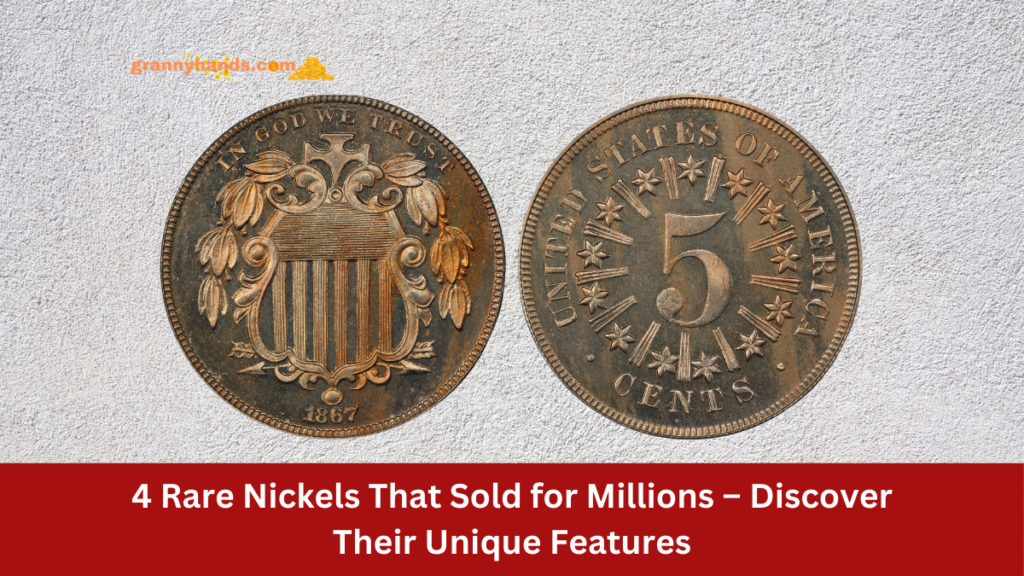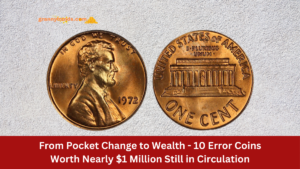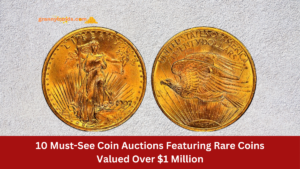Coin collecting is a fascinating hobby that can be incredibly rewarding, especially when you come across rare pieces that have fetched millions at auctions. Among these treasures are four exceptional nickels, each with unique characteristics that have captivated collectors worldwide.
Rare Nickels Sold for Millions
1. Jefferson Nickel
The 1938 Jefferson Nickel, minted in Denver, is notable for its pristine condition and the “Full Steps” detail on Monticello’s depiction. Graded MS68+, this coin sold for an impressive $33,600 in July 2022. The “Full Steps” designation indicates that the steps on Monticello are fully visible, a feature highly sought after by collectors. The coin’s near-perfect state and this distinct detail contribute significantly to its high value.
2. Shield Nickel Collection
A remarkable set known as the Complete Proof Shield Nickel Registry Set from The Law Collection comprises 20 coins, each certified by PCGS with grades ranging from PR65 to PR67. This collection includes some of the rarest proof issues of the Shield Nickel series, such as the 1867 Rays. The set’s high-quality condition and the inclusion of these rare pieces led to its sale for $176,250 in August 2012.
3. Buffalo Nickel
The 1918/7 Buffalo Nickel, minted in Denver, features an overdate error where the number eight is stamped over the number seven. This mistake occurred during a hurried production period in 1917 and 1918, resulting in a limited number of these coins. A specimen graded MS65 by PCGS sold for $264,500 in January 2010, highlighting the significant value attributed to such minting errors.
4. Liberty Head Nickel
The 1913 Liberty Head Nickel, often called “The Mona Lisa of Rare Coins,” is one of only five known examples. This particular coin, known as the Olsen specimen, boasts a rich history of ownership, including figures like Egyptian King Farouk and NBA team owner Dr. Jerry Buss. Graded PR64 by NGC, it sold for over $3.7 million in January 2010, underscoring its immense rarity and desirability among collectors.
| Coin Type | Year | Mint Mark | Grade | Sale Price |
|---|---|---|---|---|
| Jefferson Nickel | 1938 | Denver | MS68+ | $33,600 |
| Shield Nickel Collection | Various | N/A | PR65-PR67 | $176,250 |
| Buffalo Nickel | 1918/7 | Denver | MS65 | $264,500 |
| Liberty Head Nickel | 1913 | N/A | PR64 | Over $3.7M |
These extraordinary nickels exemplify the allure of coin collecting, where historical significance, unique features, and exceptional conditions can lead to astonishing auction results. For collectors and enthusiasts, these coins serve as benchmarks of rarity and value in the numismatic world.
FAQs
What makes the 1938 Jefferson Nickel so valuable?
The 1938 Jefferson Nickel’s value stems from its near-perfect MS68+ grade and the “Full Steps” detail on Monticello, indicating a sharp and complete strike, which is rare for this series.
Why is the 1913 Liberty Head Nickel called “The Mona Lisa of Rare Coins”?
The 1913 Liberty Head Nickel is dubbed “The Mona Lisa of Rare Coins” due to its extreme rarity—only five known specimens—and its storied history of ownership among prominent collectors.
What is an overdate error in coin minting?
An overdate error occurs when a coin’s die is mistakenly struck with two different dates, one over the other, as seen in the 1918/7 Buffalo Nickel, where the number eight is stamped over the number seven.
How does the “Full Steps” designation affect a coin’s value?
The “Full Steps” designation indicates that the steps on Monticello’s depiction are fully visible and sharply struck, an uncommon and highly sought-after feature that significantly increases the coin’s value.
What factors contribute to a coin’s high auction price?
A coin’s auction price is influenced by its rarity, historical significance, condition (grade), unique features (such as minting errors), and provenance or history of ownership.





